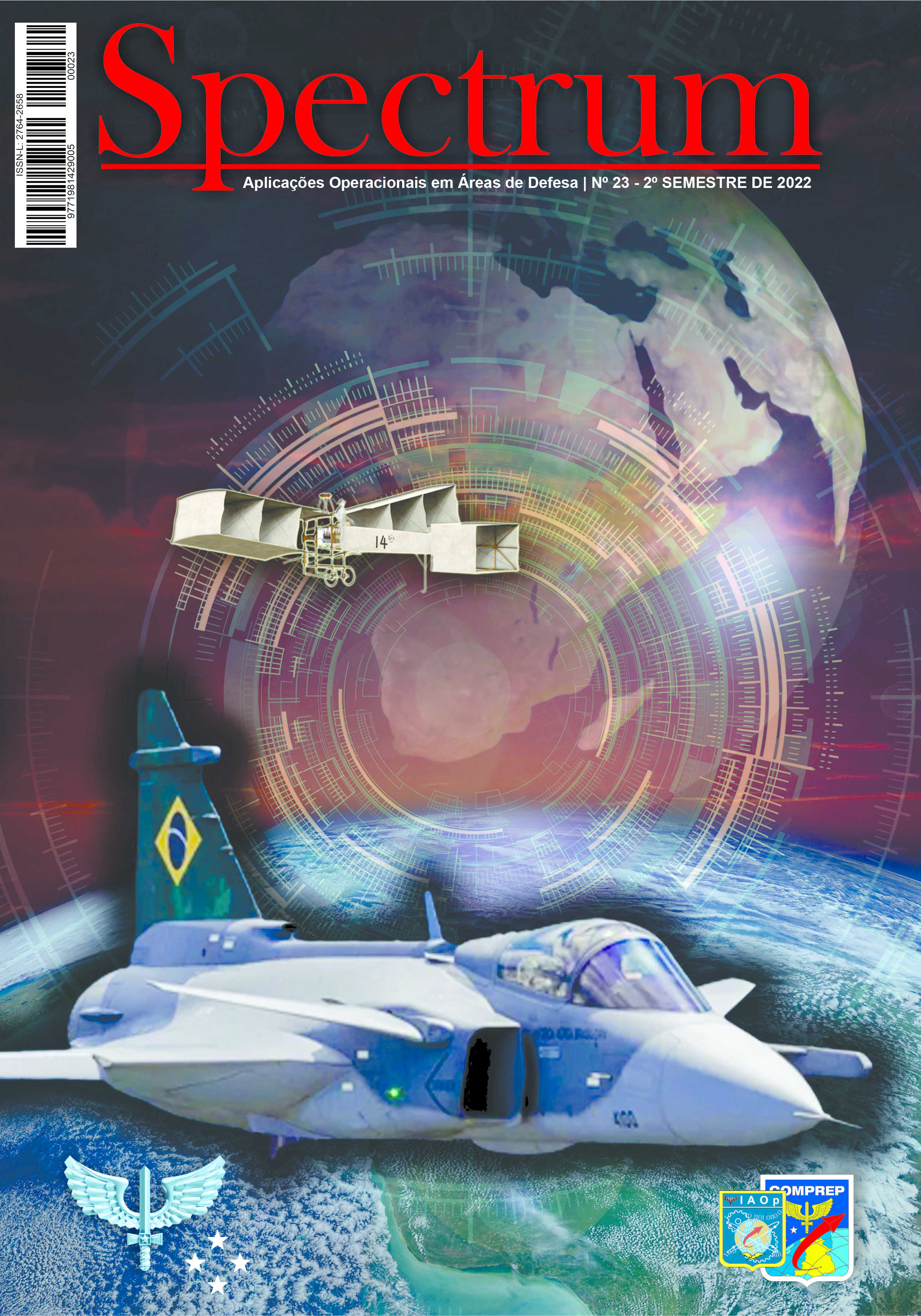Use of the Extremal Optimization heuristic for coordinated allocation of multiple targets in BVR Air Combat
DOI:
https://doi.org/10.55972/spectrum.v23i1.384Keywords:
Optimization, Target Allocation, HeuristicAbstract
This work investigated the Extremal Optimization (EO) heuristic to solve the Weapon-Target Assignment (WTA) problem when applied to an Air Combat context Beyond Visual Range (BVR). WTA is a combinatorial optimization problem, classified as NP-Complete. Due to this characteristic, its complexity grows exponentially as the number of variables increases. Thus, heuristic methods are the most suitable for this class of problems, if compared to the attempt to solve them by exact methods. The experiment carried out in this work showed that the EO adapted to the WTA in a BVR combat scenario quickly converged to the global minimum of the function, proving to be very suitable for solving problems of this class.
References
R. K. Ahuja, A. Kumar, K. C. Jha, and J. B. Orlin, “Exact and Heuristic Algorithms for the Weapon-Target Assignment Problem,” Oper. Res., vol. 55, no. 6, pp. 1136–1146, 2007.
A. S. Manne, “A Target-Assignment Problem,” Oper. Res., vol. 6, no. 3, pp. 346–351, Jun. 1958.
S. P. Lloyd and H. S. Witsenhausen, “Weapons Allocation is {NP}-Complete,” in Proceedings of the Summer Conference on Simulation, 1986, pp. 1054–1058.
P. M. Pardalos and L. S. Pitsoulis, Nonlinear assignment problems : algorithms and applications, no. 7. Springer US, 2000.
D. A. Grundel, “Probabilistic analysis and results of combinatorial problems with military applications,” University of Florida, 2004.
B. Liu, Z. Qin, R. Wang, Y. B. Gao, and L. P. Shao, “A hybrid heuristic particle swarm optimization for coordinated multi-target assignment,” 2009 4th IEEE Conf. Ind. Electron. Appl. ICIEA 2009, pp. 1929–1934, 2009.
W. Jingye, “Weapon-Target Assignment Research Based on Genetic Algorithm Mixed with Damage Simulation,” in International Conference on Computer Application and System Modeling, 2010, no. Iccasm, pp. 460–463.
J. Wang and Y. W. Zhu, “A solving algorithm for Target Assignment optimization model based on SA,” Proc. - Int. Conf. Artif. Intell. Comput. Intell. AICI 2010, vol. 3, no. Icnc, pp. 489–493, 2010.
M. A. Sahin and K. Leblebicioglu, “A hierarchical fuzzy decision maker for the Weapon Target Assignment,” IFAC Proc. Vol., vol. 18, no. PART 1, pp. 8993–8998, 2011.
S. Boettcher and A. G. Percus, “Extremal Optimization: Methods derived from Co-Evolution,” in Proceedings of the Genetic and Evolutionary Computation Conference, 1999, pp. 825–832.
S. Boettcher and A. G. Percus, “Extremal Optimization: An Evolutionary Local-Search Algorithm,” in Computational Modeling and Problem Solving in the Networked World, 2003, pp. 61–77.
P. Bak, C. Tang, and K. Wiesenfeld, “Self-organized criticality: an explanation of the 1/ f noise,” Phys. Rev. Lett., vol. 59, no. 4, pp. 381–384, 1987.
IEAV, “Projeto Aerograf.” [Online]. Available: http://www.ieav.cta.br/divisoes/site-egi/?page_id=36. [Accessed: 05-Jul-2017].
De-Lin Luo, Chun-Lin Shen, Biao Wang, and Wen-Hai Wu, “Air Combat Decision-Making for Cooperative Multiple Target Attack Using Heuristic Adaptive Genetic Algorithm,” in 2005 International Conference on Machine Learning and Cybernetics, 2005, pp. 473–478.
Downloads
Published
How to Cite
Issue
Section
Categories
License
Copyright (c) 2022 Leonardo Honorio Macedo, Rodrigo Arnaldo Scarpel, Henrique Costa Marques

This work is licensed under a Creative Commons Attribution-NonCommercial-ShareAlike 4.0 International License.



